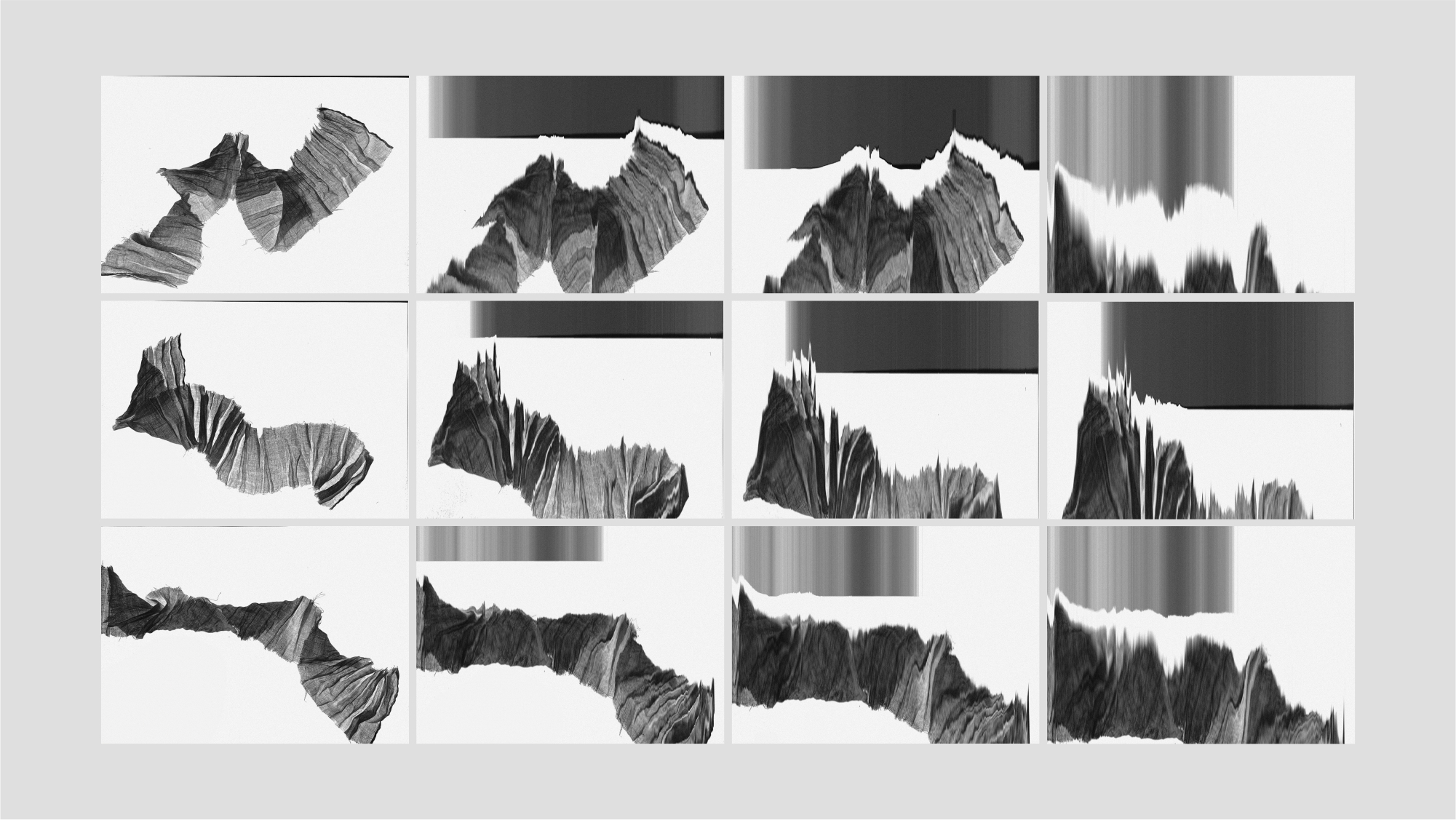Hidden Third
At the heart of the ‘Hidden Third’ lies a single thread—a cotton gauze cloth—that takes on an array of forms: scanned, suspended, projected upon, printed through, and superimposed. These transformations alter the very essence of the fabric, blurring the lines between reality and representation, authenticity and illusion, the real and the artificial. Transcending beyond the mere material transformation, the installation prompts the viewer to reflect on the multidimensionality of identity and perception— how many versions of selves may exist within and beyond our immediate realities?
Part of the IM Thesis showcase at the Project Space in April 2024
Part of the IM Thesis showcase at the Project Space in April 2024

This project draws on thinkers like Frank Rose, Oliver Grau, and Basarab Nicolescu, who explored perception's multidimensionality. Nicolescu’s concept of the Hidden Third challenges binary views of self and environment, inspiring reflection on how technology shapes immersion and reality. This hidden dimension, according to Nicolescu, represents a deeper level of reality accessible through transdisciplinary and non-binary thinking, leading to a more comprehensive understanding of the world and ourselves.
Artists like Joseph Kosuth, Olafur Eliasson, and Jesús Rafael Soto also examined how perception affects the self's relationship with the world. Kosuth's One and Three Chairs (1965) explores diverse interpretations of reality, while Eliasson and Soto’s immersive works emphasize interconnectedness and the observer's role. Hidden Third similarly transcends two-dimensional boundaries, inviting viewers to shift perspectives by engaging directly with spatial dimensions.
Artists like Joseph Kosuth, Olafur Eliasson, and Jesús Rafael Soto also examined how perception affects the self's relationship with the world. Kosuth's One and Three Chairs (1965) explores diverse interpretations of reality, while Eliasson and Soto’s immersive works emphasize interconnectedness and the observer's role. Hidden Third similarly transcends two-dimensional boundaries, inviting viewers to shift perspectives by engaging directly with spatial dimensions.


Cache Select TOP in TouchDesigner was used for projection, triggering the camera image to appear only with movement in the space. This image was then masked onto a particle system, creating a visual effect where it resembled floating points, akin to shadows.
For Elongation, fabric was randomly arranged and scanned, with vertical pixel displacement applied. This technique conveyed a narrative of gradual fading, highlighting the ephemeral nature of existence. In Dethreading, fabric was deconstructed into individual threads, symbolizing impermanence. In Re-printing, fabric texture was reprinted with ink on paper, creating an absence of the original material.
Finally, in Superimposition, wooden boxes were covered with fabric, featuring texts that explored perception and reality, reflecting on the themes studied for the installation.
For Elongation, fabric was randomly arranged and scanned, with vertical pixel displacement applied. This technique conveyed a narrative of gradual fading, highlighting the ephemeral nature of existence. In Dethreading, fabric was deconstructed into individual threads, symbolizing impermanence. In Re-printing, fabric texture was reprinted with ink on paper, creating an absence of the original material.
Finally, in Superimposition, wooden boxes were covered with fabric, featuring texts that explored perception and reality, reflecting on the themes studied for the installation.

The central projection activates upon entry, revealing how reality responds to our active observation. Only those aware of their presence notice this responsiveness, underscoring the role of self-consciousness. This selective discovery adds depth for engaged viewers, echoing the philosophical question: "If a tree falls in a forest and no one is around to hear it, does it make a sound?" The activation of the projection relies on the observer's presence, mirroring how art's existence depends on a witness, indicating its manifestation hinges on perception. Additionally, other artworks in the installation explore transience, prompting reflection on existence: does one exist objectively or only in perception?


Hidden Third is a gateway to perpetual discovery, reflecting the dynamic nature of reality. It delves into what comprises reality, one's place within it, and the role of perception. I hope it becomes a journey of self-discovery and an enduring invitation to explore the human experience.
